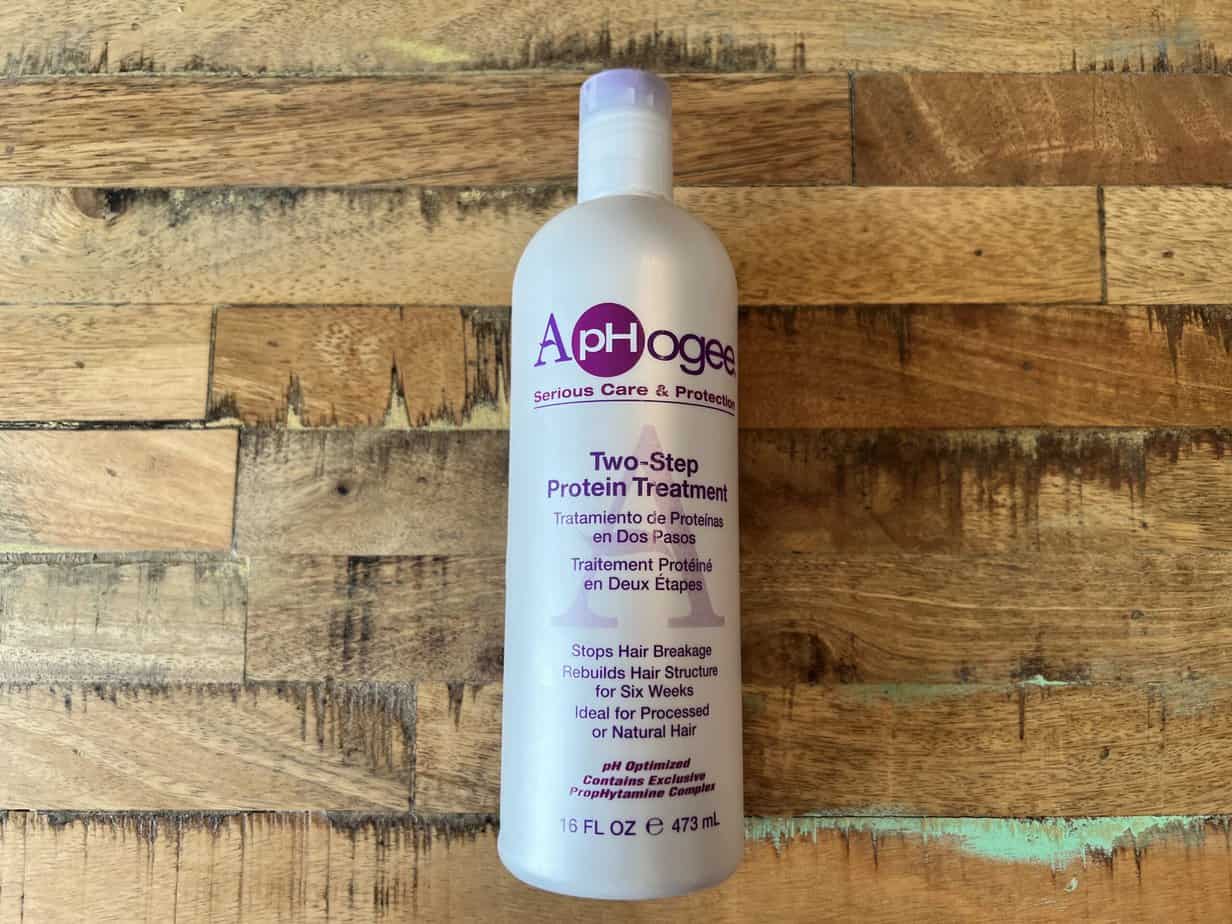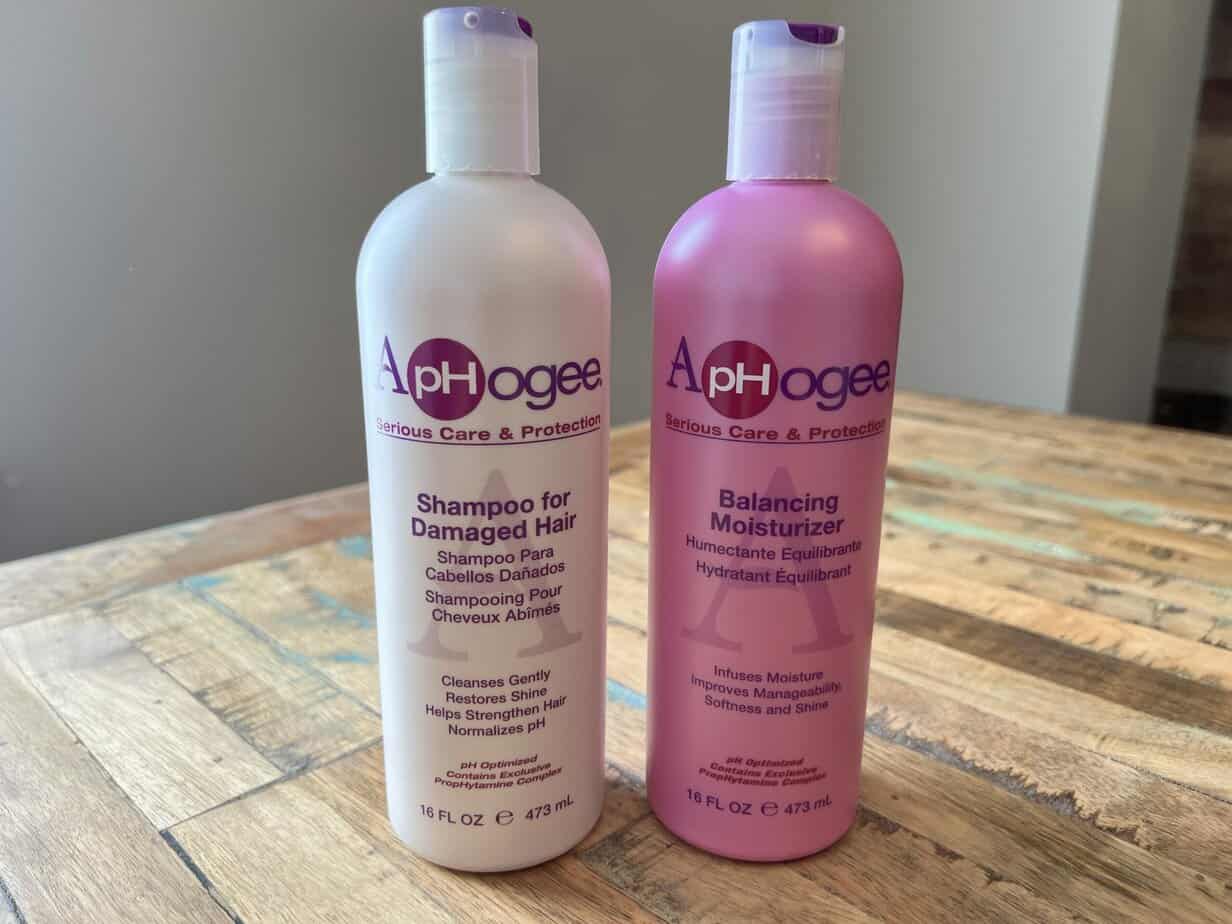
Were you greeted with gummy locks of hair after an ambitious dye session, bleach job, or chemical process? Believe it or not, it happens to lots of people.
The sheer volume of hair fail videos on YouTube and other social media platforms serve to prove that fact. Gummy, stretchy hair is abnormal and extremely prone to damage.
The good news is that you can bring your hair back to life with the right care. And that’s what we’ll help you out with this article. We’ll first tell you why your hair might have turned out gummy and then share how to fix gummy hair using a detailed step-by-step process.
Table of Contents
Why Your Hair Is Gummy
The most common culprit behind gummy hair is overprocessing from bleach, dye, or other chemical treatments. With bleach and dye, your hair’s outer cuticle is forcibly opened, and the chemicals penetrate the hair shaft to remove or change your natural hair color.

Chemical treatments like perms and relaxers alter your natural hair texture by breaking its protein bonds. Whenever a potentially harsh chemical is applied to your hair and isn’t rinsed out in enough time, there’s a risk of severe damage.
This doesn’t happen all the time, of course - it mainly happens when the chemicals are misused or applied to already compromised hair. In cases like these, the chemicals eat through the hair’s structure.
Your hair could also become gummy when you style it too often or too vigorously, but this isn’t nearly as common as chemical-related gumminess.
How to Fix Gummy Hair
When your hair is in a gummy state, the thing it needs most is protein. Since your hair is gummy because of insufficient protein, injecting protein back into the hair can help tremendously. Not only will a protein treatment repair your severely damaged hair, but it will leave your hair much stronger than it was initially.

Types of Protein Treatments
When it comes to at-home protein treatments for gummy hair, you have a couple of options to consider: (1) pre-made commercial protein treatments and (2) DIY treatments.
Commercial Protein Treatments
You can find a pre-made protein treatment at your local department store, beauty supply store, or even online. The most popular protein treatment utilized by Black women is the Aphogee 2-Step Hair Treatment.
It works to restore damaged hair and guard against breakage for weeks. It's specially formulated for hair that’s turned mushy when wet or brittle after drying.

To get the benefits of this treatment, you’ll follow the instructions on the packaging. They’ll instruct you to do the following:
- Wash your hair with Aphogee’s Shampoo for Damaged Hair.
- Apply the 2-Step Protein Treatment. Be careful to coat every single strand in the product and gently comb it through for even distribution.
- Sit under a hooded dryer for 20 to 45 minutes.
- Rinse your hair thoroughly.
- Shampoo with Aphoghee’s Balancing Moisturizer.
- Leave the shampoo on your hair for 2 minutes and then rinse thoroughly.
- Proceed with the styling process as usual.

DIY Protein Treatments
Some don’t like the idea of using commercial protein treatments, no matter how gummy their hair is. And if that sounds like you, we totally understand. You could get comparable results with a DIY treatment comprised of just a few ingredients.
Note: Aphogee and other professionally formulated treatments have a higher chance of working for you than some DIY treatments.
The Egg White Protein Treatment
Egg whites are an amazing source of protein, and when applied topically, they can do gummy hair a lot of good. Here’s how to do an egg white protein treatment at home.
- Crack 2 eggs and discard the yolks. You should only have the whites left.
- Apply the egg whites to your hair. Be careful to ensure that all of your hair is covered. Any hair that’s left out won’t receive the protein it needs.
- Cover your hair up with a plastic shower cap and wait for up to a half hour as the treatment processes.
- Rinse the egg whites out of your hair with cool water.
- Shampoo your hair to get the remainder of the egg whites out.
One of these treatments is sure to give your hair the protein boost it needs to return to its normal state. You may need to repeat your protein treatment a few times to see substantial results.

Secondary Treatments to Repair Gummy Hair
Protein is not all your gummy hair will need to come around. So, keep reading for some secondary treatments you can try to give your tresses an even better chance of thriving.
Hot Oil Treatment
Hot oil treatments are a lifesaver for damaged, gummy hair. They facilitate deep moisture, and that’s what your tresses need when they're dry post-chemical processing.
To do a hot oil treatment, you’ll heat some oil in your microwave after dispensing it into a microwave-safe bowl. You’ll then apply the oil to your damp hair and put on a plastic cap to trap your body heat and open up your hair cuticles.
Rinse the oil out, and then proceed with your typical hair routine.
Deep Conditioners
In general, and especially after ruining your hair with chemicals, it’s important to replenish the moisture and nutrients you lost.
Deep conditioners are excellent for damaged hair - they inject thirsty, damaged strands with vitamins, minerals, and hydration that add shine, enhance manageability, and increase strength.
But, like just about everything else, deep conditioners aren’t all created equal.
Some deep conditioners are geared more toward protein, while others are geared toward moisture. If you’ve just done a protein treatment, you don’t want to use a protein-based deep conditioner - too much protein is never a good thing for hair.
In that case, opt for a moisturizing conditioner.
If you haven’t done a protein treatment (and don’t plan on doing one in the near future), you can use a deep conditioner that has protein in it. Most protein-based deep conditioners pair hydrating ingredients with protein, and your hair could use both.
To get the most out of your deep conditioner, we urge you to follow the information/directions on the packaging.
They will tell you how long to leave the product on your hair and specify how much of the product you should use for the best results. But if instructions leave you confused, here are some general guidelines you can use for most deep conditioners:
- Wash your hair with a deep cleansing shampoo (only if it’s been several days since you chemically treated your hair). If it’s been less than a few days, use a non-clarifying shampoo. Either way, your hair should be clean before applying the deep conditioner.
- Towel dry your hair so that it isn’t dripping. If your hair is too wet, the deep conditioner could slip off your strands rather than penetrate them.
- Apply the deep conditioner to your hair in sections. The more hair you have, and the longer your hair is, the more product you’ll have to use.
- Put on a shower cap and then wait for the deep conditioner to process. This could take anywhere from 5 minutes to 30 minutes or more. The sweet spot, though, is around 15 minutes.
- Rinse the deep conditioner out of your hair and proceed with the rest of your hair styling process.

Give Your Hair a Lot of TLC
Just because you did these treatments, it doesn’t mean that your hair is good to go indefinitely. You’ll need to give your hair TLC going forward. Here are some tips to keep in mind as you continue to care for your tresses:
- Keep your hair moisturized with leave-in conditioner, natural oils, and good ole H2O. Whenever your hair feels dry, give it a dose of moisture. Better yet, strike up a hair moisturizing routine - it should be individualized based on how your hair behaves.
- Stay away from the chemicals. Just because your hair seems to be bouncing back, it doesn’t mean that you’ve got the green light to slather more chemicals on it. The less chemical processing you do, the better your hair will fare.
- Keep it simple with styling. Every time you style your hair, it goes through some degree of manipulation, which can lead to even more damage. It’s in your hair’s best interest to leave it alone as much as possible and try to do low-manipulation hairstyles (buns, ponytails, wash n’ gos, pineapples, twist outs, etc.) Styles like these don’t require extensions or excessive manipulation, and that’s what you want.
What Does It Mean When Your Hair Feels Gummy?
When your hair feels gummy, it can be a sign of damage from over-processing or over-styling. Overuse of heat, treatments, or products can cause the hair to become gummy, sticky, or even stretchy. This gummy feeling is often caused by damage to the hair's protein structure, which can result in weak, brittle hair that is prone to breakage.
Can Olaplex Fix Gummy Hair?
While Olaplex can effectively repair gummy hair, it's important to note that it may not be a quick fix. Depending on the severity of the damage, it may take several treatments to see significant improvement in the hair's condition. Olaplex works by reconnecting the broken disulfide bonds in the hair. This restores the hair's strength, elasticity, and overall health.
How Long Does It Take To Fix Gummy Hair?
If you're using treatments like Olaplex or a protein treatment, it may take several treatments over several weeks or even months to see significant improvement. If the damage is severe, cutting off the damaged hair may be necessary to prevent further breakage, and you'll just have to wait for it to grow back out.
So, there you have it - all you need to fix your gummy hair. We hope that you found all the information you needed to put your gummy hair in the past. Good luck!




